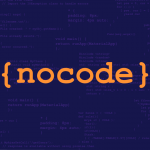In the world of design, creativity and productivity are like a delicate dance—constantly balancing intense periods of focus with well-deserved breaks. Structuring time within your team isn’t just about keeping things organized; it’s about optimizing how and when work happens to maximize output, spark innovation, and keep everyone from burning out. Think of it as crafting a rhythm—just like a musician knows when to play a note and when to rest to achieve harmony. In this article, we’ll explore how timing—through intervals, focus periods, and rest—can transform your design process into a well-orchestrated flow rather than a chaotic scramble.
Understanding the Rhythm: How Intervals Shape Productivity and Creativity in Design Teams
Let’s start with the idea of intervals. When you think about working on design projects, it’s tempting to imagine long, uninterrupted stretches of intense work. But our brains aren’t built for marathon sessions; they thrive on rhythm. By dividing work into manageable blocks, or intervals, teams can hone their focus and produce high-quality work more efficiently.
What are some common types of work intervals? Here are a few:
- Pomodoro Technique: Typically 25-minute work bursts followed by 5-minute breaks. After four cycles, you take a longer break (15–30 minutes). This method encourages sustained concentration and frequent rests.
- Sprint Sessions: These are longer, often 1–2 hour focused periods with clear goals. Useful in agile design workflows, sprints help teams batch their efforts and gauge progress.
- Focus Blocks: Dedicated time slots where team members work on specific tasks without interruptions, such as deep-dive design sessions or critique preparations.
The benefits of these structured intervals are numerous:
- Enhanced Concentration: Short, focused periods prevent mental fatigue and keep ideas fresh.
- Faster Iterations: Splitting work into discrete chunks leads to quicker feedback loops and adjustments.
- Better Time Management: Clear boundaries help teams estimate timelines more accurately and prioritize essential tasks.
- Reduced Overwhelm: Breaking complex projects into smaller sections keeps the workload digestible.
Practical Tips for Implementing Intervals:
- Start small by adopting a technique like Pomodoro for individual work sessions.
- Align intervals with project milestones, such as design drafts or client reviews.
- Adjust the duration based on team energy levels or the complexity of tasks.
- Use timers or project management tools to keep everyone on the same rhythm.
By establishing a consistent work cadence, teams can transform chaos into systematic, engaging progress.
The Balance of Breaks and Focus: Why Rest Periods Are Crucial for Sustained Creativity and Team Well-Being
While rhythm is key, so is the pause. Rest periods within the workflow aren’t signs of laziness—they’re essential ingredients for sustained creativity and mental health. Working nonstop might seem productive in theory, but in practice, it leads to fatigue, errors, and burnout.
Why are breaks so vital?
- Mental Refreshment: Short rests reset your mental energy, making it easier to approach problems with clarity.
- Enhanced Creativity: Sometimes, stepping away from a project allows subconscious ideas to simmer and come to the surface.
- Prevention of Burnout: Regular pauses help sustain long-term motivation and emotional resilience.
- Physical Well-being: Movement breaks reduce strain from prolonged sitting and promote circulation.
Types of Rest to Incorporate in Your Workflow:
- Micro-Breaks: Brief 1-5 minute pauses for stretching, eye relaxation, or a quick walk.
- Longer Breaks: 15-30 minutes to grab a snack, chat with a teammate, or do a non-work activity.
- Active Downtime: Engaging in activities like meditation, a quick workout, or even doodling unrelated to the current project.
Strategies for Effective Rest Integration:
- Encourage team members to set alarms or timers reminding them to pause.
- Make breaks a norm—promote a culture where stepping away is viewed as productive.
- Incorporate flexible schedules that allow members to choose when to take rests based on their energy peaks and troughs.
- Schedule “brain breaks” between project phases or creative review sessions.
Successful design teams understand that rest isn’t a sign of weakness but a wise investment. It boosts overall output, sparks fresh ideas, and nurtures a positive environment. When team members feel cared for and energized, their creativity flourishes.
Wrapping Up: Creating a Human-Centric Time Structure for Design Success
Design isn’t just about making things look good—it’s about problem-solving, storytelling, and innovation. To do this continuously and sustainably, your team needs a time structure that respects human rhythms. Combining well-defined work intervals with strategic rest periods creates a cycle of focus and refreshment that propels projects forward without draining your team’s energy.
By experimenting with different interval techniques—like sprints or Pomodoros—you can discover what works best for your team’s workflow. Simultaneously, fostering a culture that values breaks and promotes mental well-being will keep everyone motivated and inspired for the long haul.
Remember: when your team’s time is orchestrated with intention, creativity doesn’t just happen—it flows naturally. So, set the tempo, respect the pauses, and watch your design projects come to life with energy, clarity, and innovation. Your team’s rhythm could be the secret ingredient to not just finishing projects, but creating work that truly resonates.










